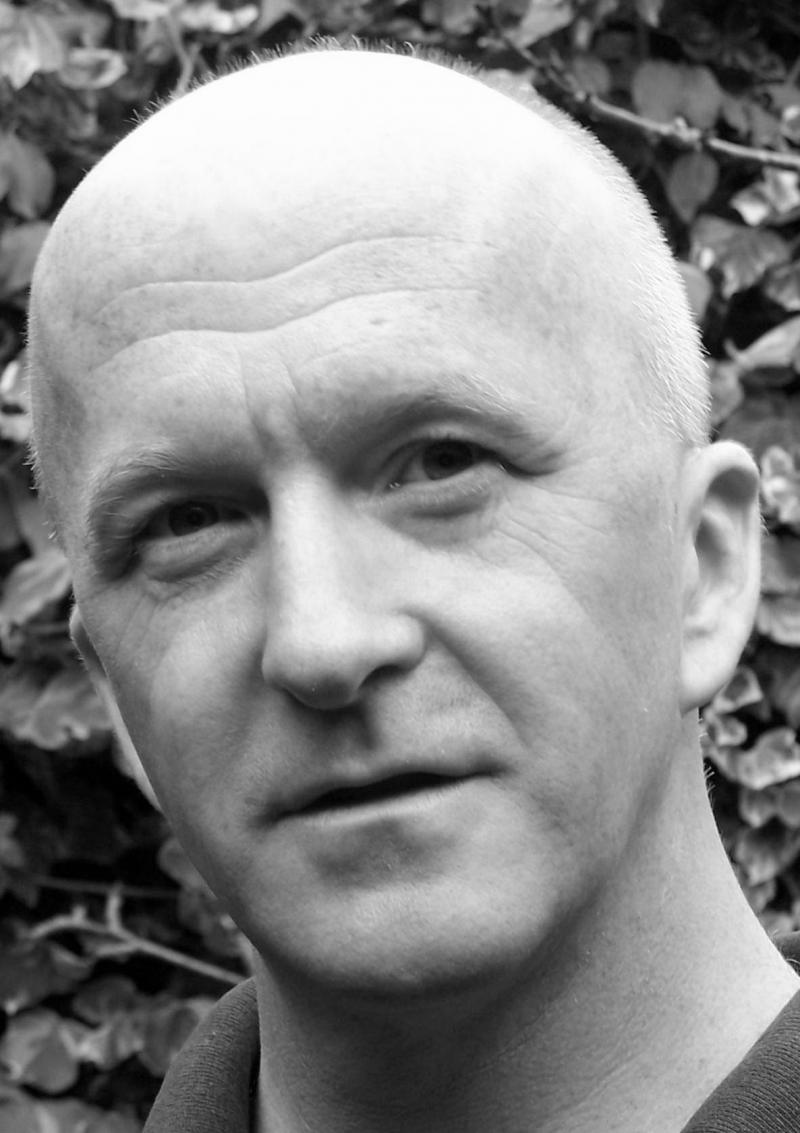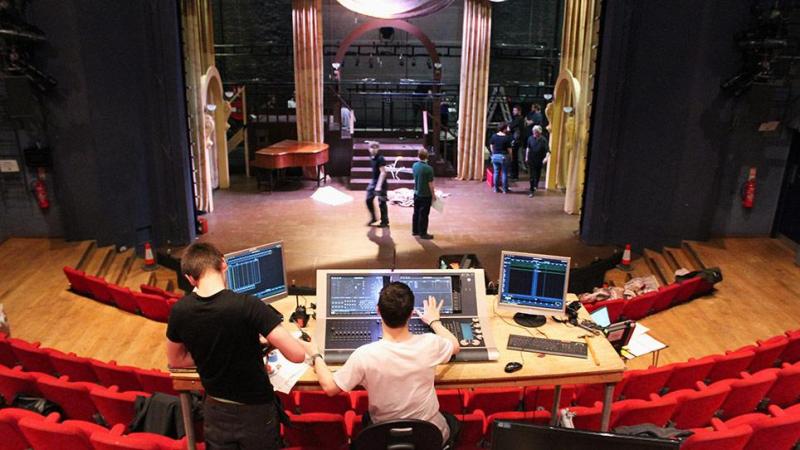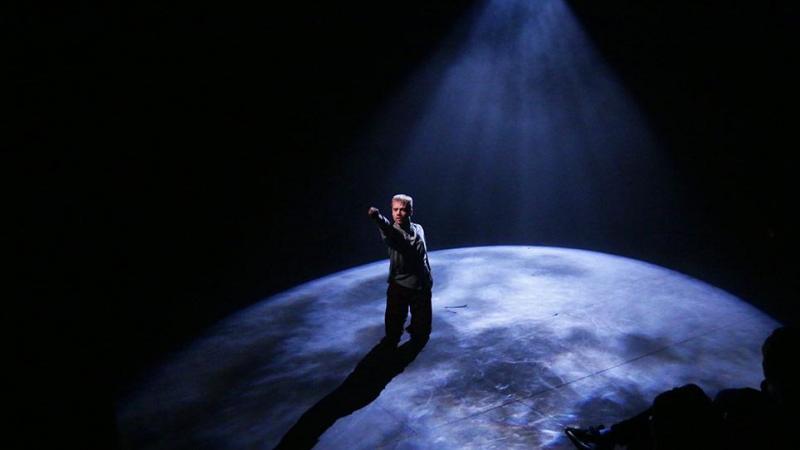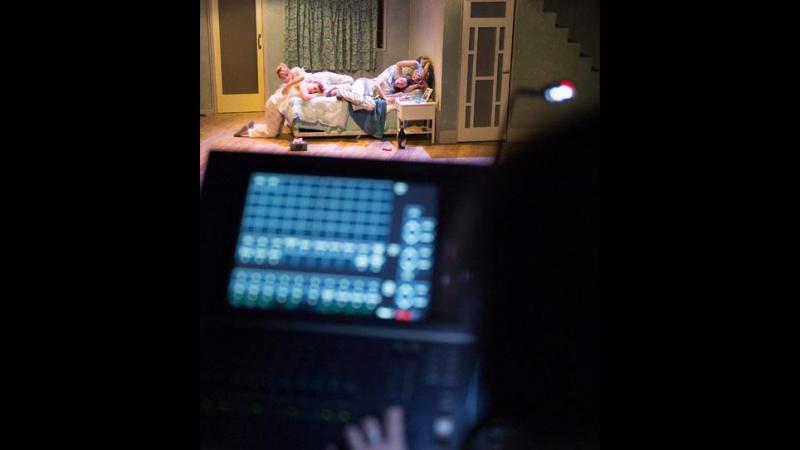BWW Blog: Royal Central School of Speech and Drama's Nick Moran Explains the Evolving Nature of Lighting Design
 Nick Moran is a professional lighting designer, lecturer, researcher and author with experience lighting drama, opera and other music theatre, large and small scale events and rock 'n' roll.
Nick Moran is a professional lighting designer, lecturer, researcher and author with experience lighting drama, opera and other music theatre, large and small scale events and rock 'n' roll.
Nick is a Senior Lecturer and Course Leader in Production Lighting and Lighting Design at London's Royal Central School of Speech and Drama; he is also a founding board member of the Association of Lighting Designers, sits on the board of Skill Scene - the technical theatre industry forum for developing standards and qualifications and is the co-convenor of the OISTAT lighting Design Working Group. Nick is the author of Performance Lighting Design, Electric Shadows and The Right Light.
On Central's BA (Hons) Production Lighting and BA (Hons) Lighting Design courses, students develop practical skills such as rigging, focusing, and plotting for lighting and video, learn to design lighting for live performance and work alongside leading professionals both within Central and in industry settings.
In this article, Nick talks about the impact that LED is having on the world of lighting design, and how these technological advancements are being reflected and realised in training.
LED Changes Everything
Most of us have seen LED fixtures that, in most if not all senses "work" as stage lanterns. While there is still kit out there that is not up to the job, the best LED fixtures have changed designer's minds, and often stretched capital or hire budgets!
LED is changing lighting design practice and perhaps stage aesthetics too. But it is also changing production practice, challenging some of the ways we have put lighting rigs together for the best part of a generation.
Here at Royal Central we first used an all LED rig in 2017 for the "Bridge Project", a three-week season of Shakespeare adaptations that many a Central lighting student has cut their teeth on over the years. Employing around 30 fixtures, the now "all LED" Bridge Project provides a great opportunity for student LDs to play with colour on a studio-scale project. To provide a larger scale perspective, we called on ace Production Electrician Martin Chisnall to come and talk to some of the next generation of lighting practitioners at Central. He shared his thoughts and showed us his production plans for the almost all LED Mamma Mia! UK tour, featuring the COTPADD [Chissers On Truss Power and Data Distribution].
While our recently completed new building was being constructed, we put the Bridge Project into a "church hall", which the students converted into a 56-seat black box theatre. Only remaining problem - very little electrical power - certainly not enough for a conventional theatre rig! Hence calls to our friends at ETC and Chauvet Lighting and our first all LED rig. With a bit of help, the students delivered a 6-area cover (front, back and sides) with specials, over a 24 foot-wide acting area, in a hall with only domestic power.
Power Consumption - less Amps?
 One of the main drivers for the change to LED is that we can light shows with a lot less electrical power. I understand that one reason the UK theatre producers Bill Kenwright Ltd became early adopters of LED lighting on their shows was the significant reduction in the cost of electricity used on a show - which can be quite a lot in the UK. A significant reduction in the power needed for the all LED rig enabled Central students to deliver their Bridge Project in a church hall with only domestic power sockets. The ability to power a decent sized rig from essentially domestic power has also meant that many parties and events, in tents and historic buildings, now have more lighting, without the need for external generators.
One of the main drivers for the change to LED is that we can light shows with a lot less electrical power. I understand that one reason the UK theatre producers Bill Kenwright Ltd became early adopters of LED lighting on their shows was the significant reduction in the cost of electricity used on a show - which can be quite a lot in the UK. A significant reduction in the power needed for the all LED rig enabled Central students to deliver their Bridge Project in a church hall with only domestic power sockets. The ability to power a decent sized rig from essentially domestic power has also meant that many parties and events, in tents and historic buildings, now have more lighting, without the need for external generators.
My Rig Has Put On Weight!
There are a few other things that immediately strike you when you first use decent quality LED fixtures. They weight more! The LED profiles are around 2 to 5 kg heavier than their tungsten mates, but the LED Fresnels and PARs are sometimes more than double the weight of the fixtures they replace. Now you might need fewer units when you get your warms, cools, and saturates out of each one, and you will probably be using less cable, but on a big rig the additional weight adds up pretty quickly.
Data - More Addressing, More Channels, Nodes, Splitters and Paperwork!
An LED rig gets bigger in another way too. With the dramatic increase in what each  fixture can do comes a similar increase in the importance of logical planning and documentation of how data gets around the lighting system. With a conventional tungsten rig, if the plugging all gets a bit confused someone can always flash out from the dimmers, or just plug lines into "hot power" to check a circuit. With a rig of LED fixtures, if the patch is just one digit out, chances are nothing will work properly.
fixture can do comes a similar increase in the importance of logical planning and documentation of how data gets around the lighting system. With a conventional tungsten rig, if the plugging all gets a bit confused someone can always flash out from the dimmers, or just plug lines into "hot power" to check a circuit. With a rig of LED fixtures, if the patch is just one digit out, chances are nothing will work properly.
Reliability, and Crewing - fewer, smarter, bodies?
There is an argument that once an LED rig is in place it needs little or no maintenance. Certainly, there will be no burnt out deep blue gels to replace, tungsten lamps to change. The kit doesn't get so hot either, so we can expect fewer failures of electronics and mechanisms. As Martin says:
"One of the drivers for converting Mamma Mia to LED was that the LX crew were consistently missing all their breaks swapping out broken VL2000s between shows. This has now changed. It's not that LED fixtures never break, and when they do break they have new modes of failure to get used to. But they are massively more reliable."
Installing or touring a fully LED rig certainly demands more planning and documentation than doing the same with a conventional rig. It requires crew who feel at home with data distribution and networks - including fault finding of Ethernet based control systems. It definitely requires a higher level of programming skill to get the shows working, and to update the cues when the performances evolve. All this should mean higher fees for more technically skills set up and touring crew. It also  means these crew will need to spend time keeping up-to-date with developing technologies, and money on increasingly sophisticated tools we need to troubleshoot what is effectively a large distributed network of lighting computers!
means these crew will need to spend time keeping up-to-date with developing technologies, and money on increasingly sophisticated tools we need to troubleshoot what is effectively a large distributed network of lighting computers!
All this impacts very directly on training programs for lighting people, which is why Central brings in top practitioners such as Martin Chisnall and others to ensure our students are ready for the new world of LED lighting - not just ready for the aesthetic challenges, but the technical ones too.
This piece was adapted from a longer article written by Nick Moran , LED Changes Everything, for Focus Magazine, the official magazine of The Association of Lighting Designers, of which Nick is an elected director, board member and Education Representative for the ALD. To read Nick's article in full, please visit the ALD website.
The Royal Central School of Speech and Drama is a leading UK drama school located in London - a highly regarded, specialist conservatoire and a constituent college of the prestigious University of London. Central provides specialist training in the dramatic and performing arts, offering Bachelor's and Master's degrees as well as short courses and PhD opportunities. Students from across the world study on Central courses, bringing a rich diversity of skills and experience to create a unique community and training environment.
All of Central's courses take place on the school's Swiss Cottage campus in Hampstead, a quiet, leafy corner of London which is only 10 minutes by tube from the bright lights of central London's West End theatre district. Central's campus houses the 234 seat Embassy Theatre, numerous workshops, rehearsal, movement and performance studios and the new £16.7 million state of the art North Block building comprising a studio dedicated to film, media and digital work and a galleried, courtyard theatre.
Central holds auditions and interviews for its courses across the globe, including San Francisco (4 and 5 February 2020) and New York City (8 and 9 February 2020). To find out more and to register your interest in being considered for a course, please visit the Central website here.
Videos


